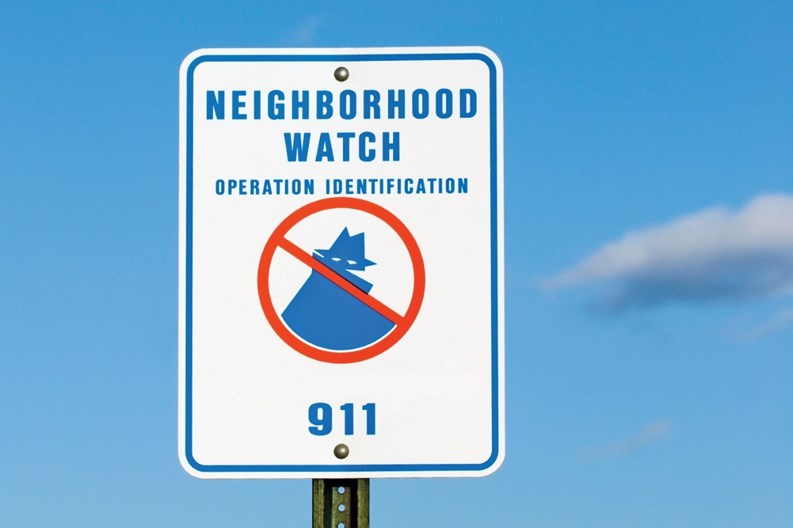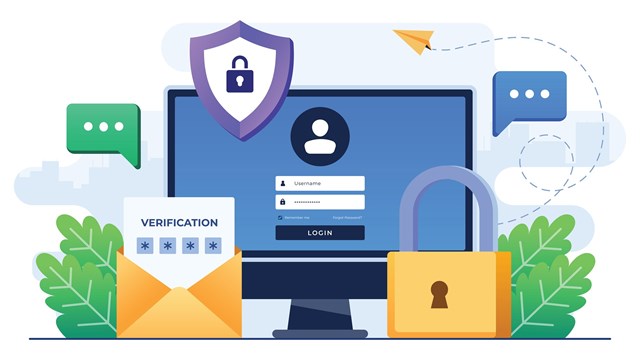It’s often said that safety starts at home—and while many HOAs spend lots of money on sophisticated security and access control systems to protect residents and property, others opt for lower-tech solutions to neighborhood security and crime prevention. One such solution is the neighborhood watch organization: a group of concerned residents coming together to make a commitment to be vigilant and observant and to do what they can in their own community to prevent crimes like vandalism, burglary, and even arson.
One of the more severe effects of economic downturns is the downsizing of public services by municipalities that are seeking to cut corners and save money in a variety of ways. The recession usually means not only freezes on raises and hiring but damaging layoffs that can result in fewer police officers on patrol. The neighborhood watch program can provide a successful alternative, in many cases.
The neighborhood watch is not a new idea but a variation on an older theme, says Officer Kelly Carsillo, a crime prevention officer with the West Palm Beach Police Department. “It goes back to the years when our grandparents would sit on the porch and wave to little Johnny down the street, when you knew what people were up to. Today we live in a society where people don’t get to know each other as much. Mostly, people just want to come and go. We advocate that people need to know each other, what their emergency contact numbers are, what cars they drive, what hours they generally keep, to go knock on their door, and to pay attention to what’s going on in your community.”
Existing Networks
One of the challenges facing many watch groups is the consistency and dedication of the volunteers, says Carsillo. “As far as neighborhood watches go, I don’t have any that have gone long term. What I find is that I get a lot of calls when a rash of incidents happen, such as auto burglaries, but once the threat passes it typically just falls apart.”
This may be encouraging for those living in housing communities. “What I have found to be more effective is dealing with existing homeowner’s associations, because they already have monthly meetings. Because the structure is already in place, it’s easier for me to get a crime prevention message into that group. So I can incorporate everything into those meetings.”
Working with Law Enforcement
In addition to volunteer patrols that will go out in cars, the neighborhood watch can help law enforcement in a variety of ways, says Carsillo. “Because I work through the homeowners’ associations, who have been in place for sometimes 20 years, I’m able to access their existing organization. They already have networks set up, like email trees, and can get the word out quickly and easily. Everyone that attends my meetings is also on my email tree. I have a great relationship with most of the people involved, and I get tons and tons of feedback from people all the time, and if I need some information, I’ll put it out there, and get a response.”
One way that watch groups help law enforcement is through the monitoring of the neighborhood comings and goings, says Carsillo. “I can send out an email that says ‘hey, be on the lookout for this guy: he was just released from prison and had committed several burglaries in your area,’ and people will respond.”
Another way is through the immediate reporting of suspicious or criminal activity: “I have had several calls come in to 911 that were robberies in progress, and because of the crime watch, the offenders were apprehended,” reports Carsillo. “With all the foreclosed homes around, people are starting to squat, and the crime watch groups are calling it in. That is a form of trespassing.”
Setting up Watch
“If you want to form a crime watch, I require a designated area: one block, two blocks… however big you want it to be, and then you have to get at least a 90% participation from the people in the area,” says Carsillo. “You have to have the participation.”
As part of the effort to involve as many people as possible, the watch group should reach out to the community and raise awareness, says Carsillo. “My neighborhood associations do regular pot luck dinners and they close the streets down for block parties or neighborhood events. I basically ask them to get to know your neighbors. If you don’t know your neighbors you are not going to have success.”
Neighborhood watch groups are essentially the eyes and ears of local law enforcement, says John Bedilio, a spokesperson for the National Neighborhood Watch Institute, which is headquartered in California. “They are there to report, not to act. There have been times when a volunteer on patrol has crossed the line. In those instances it can be necessary to engage law enforcement to protect someone’s privacy,” continues Bedilio, “although unless someone is actually breaking the law, it can be hard to curb someone’s zeal.”
“I haven’t had anyone become overzealous,” counters Carsillo. “Usually when someone suspects something, they are right on the money. The interesting thing is when you live in a community for any given time you know who belongs there and who does not belong there. It’s very family oriented and you know if somebody sticks out and doesn’t belong in that community.”
The Costs
The actual formation of a neighborhood watch group shouldn’t cost anything, says Bedilio. “The out-of-pocket costs come in when the group would like to publicize itself. If you want placards to post in the neighborhood, as a deterrent, or if you want fliers or other materials to raise awareness, those costs will have to come from the watch group itself.”
Other Security Measures
Multi-family organizations may also consider using other security measures, such as a security force or electronic surveillance. They are all effective, depending on the circumstances,” says Donald J. Decker of Robson Forensic Inc. in Cedar Knolls, New Jersey. “It depends upon the location, but all three can be effective security measures. Having a recording of what a person is wearing can be more
reliable than what someone remembers, but recordings can’t call in a robbery in progress…. and security personnel can be expensive, especially for larger forces.”
“Dealing with people is often more effective than dealing with a machine,” says Carsillo. “They are both effective means, but the recording can really only be of use after-the-fact. A person can call in and the crime can be thwarted while it is happening. Using both is better. I love it when we can get a call and have evidence on tape.”
Another very important benefit to the neighborhood watch program is that it really goes a long way towards fostering a sense of community, says Bedilio. “These networks that are created keep people in touch with each other, and it keeps people interested in what others are doing. In an increasingly private and isolated society, this is one program that asks people to reach out to each other, to keep up with each other, and to be concerned with what is going on around each other.”
Denton Tarver is a freelance writer and a frequent contributor to The South Florida Cooperator.







Leave a Comment